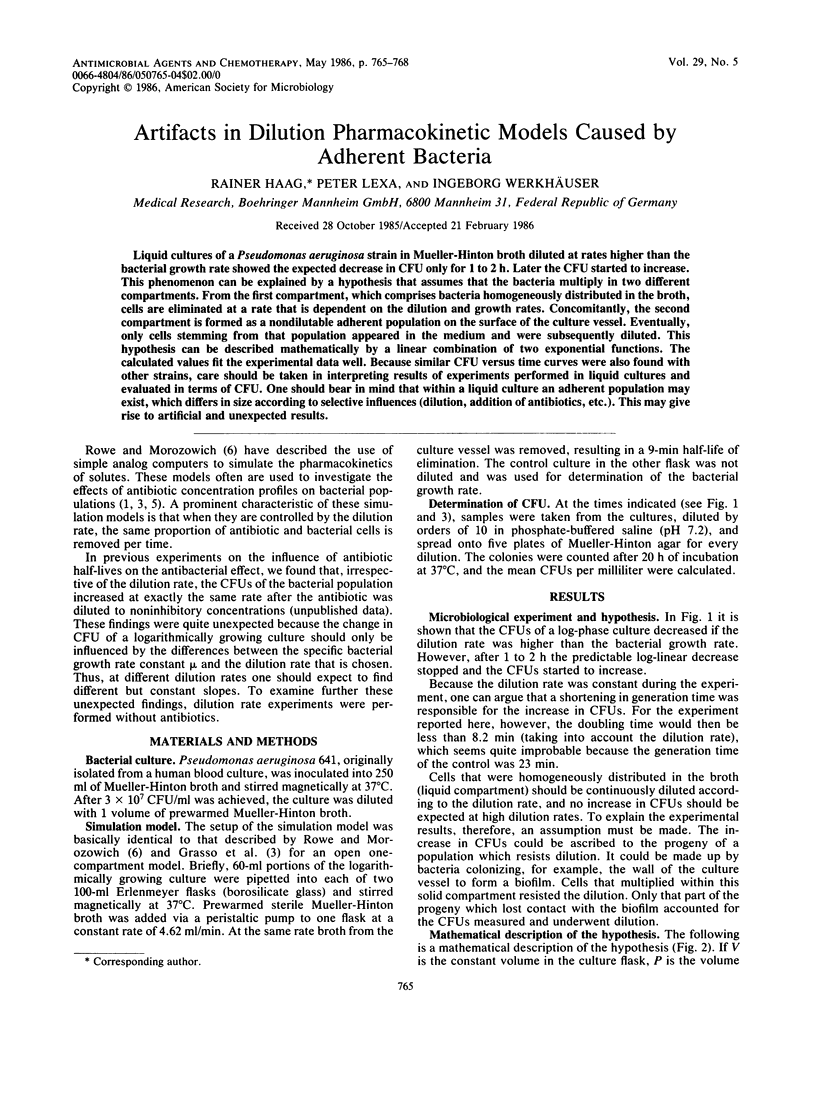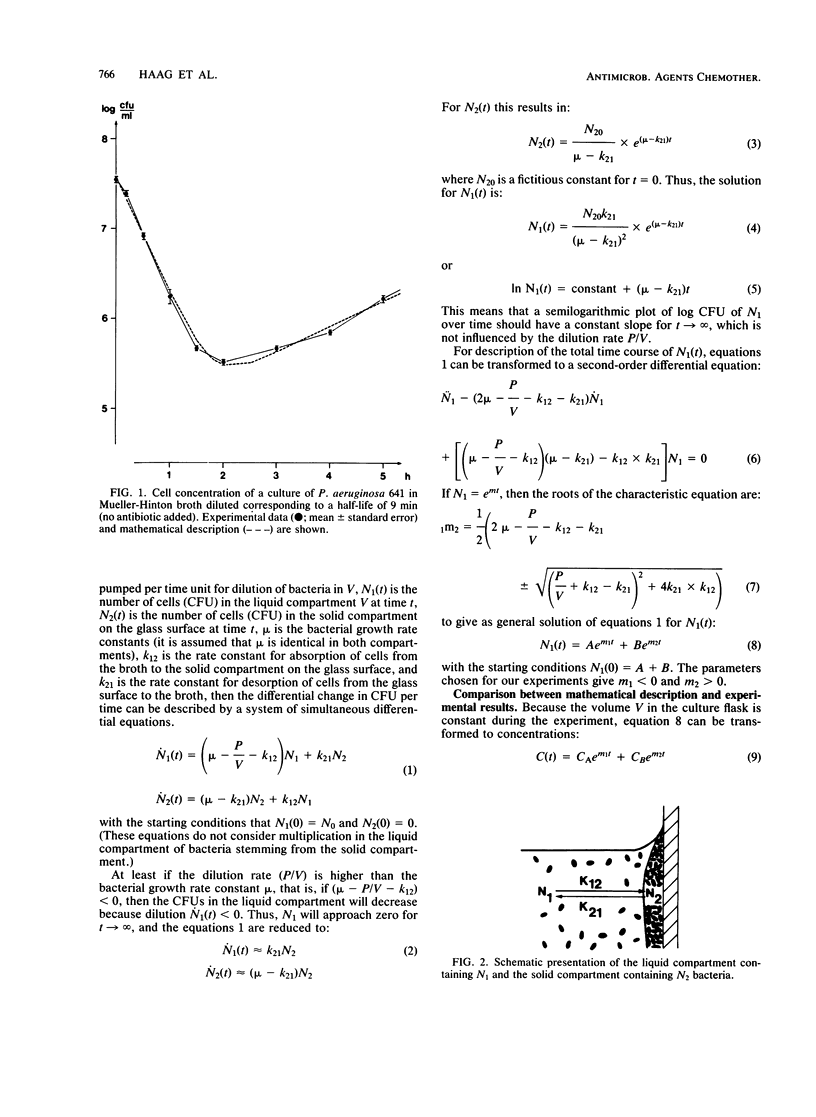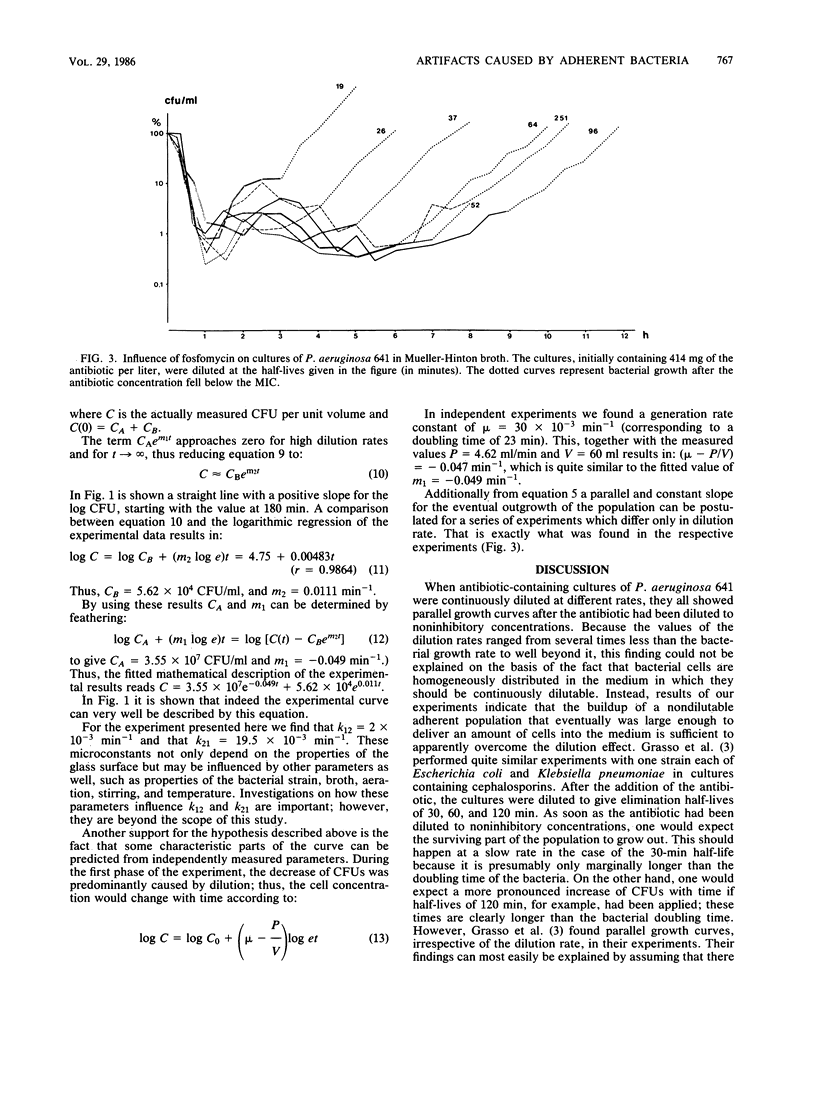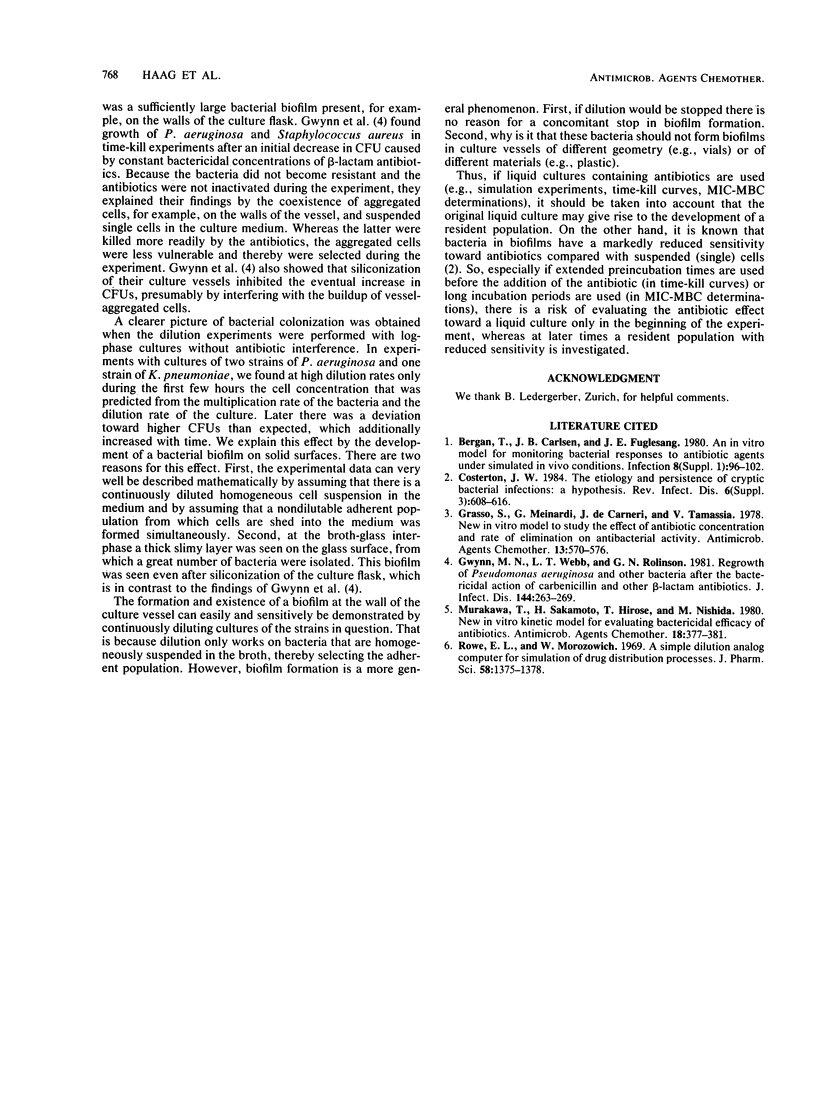Abstract
Liquid cultures of a Pseudomonas aeruginosa strain in Mueller-Hinton broth diluted at rates higher than the bacterial growth rate showed the expected decrease in CFU only for 1 to 2 h. Later the CFU started to increase. This phenomenon can be explained by a hypothesis that assumes that the bacteria multiply in two different compartments. From the first compartment, which comprises bacteria homogeneously distributed in the broth, cells are eliminated at a rate that is dependent on the dilution and growth rates. Concomitantly, the second compartment is formed as a nondilutable adherent population on the surface of the culture vessel. Eventually, only cells stemming from that population appeared in the medium and were subsequently diluted. This hypothesis can be described mathematically by a linear combination of two exponential functions. The calculated values fit the experimental data well. Because similar CFU versus time curves were also found with other strains, care should be taken in interpreting results of experiments performed in liquid cultures and evaluated in terms of CFU. One should bear in mind that within a liquid culture an adherent population may exist, which differs in size according to selective influences (dilution, addition of antibiotics, etc.). This may give rise to artificial and unexpected results.
Full text
PDF



Selected References
These references are in PubMed. This may not be the complete list of references from this article.
- Grasso S., Meinardi G., de Carneri I., Tamassia V. New in vitro model to study the effect of antibiotic concentration and rate of elimination on antibacterial activity. Antimicrob Agents Chemother. 1978 Apr;13(4):570–576. doi: 10.1128/aac.13.4.570. [DOI] [PMC free article] [PubMed] [Google Scholar]
- Gwynn M. N., Webb T. L., Rolinson G. N. Regrowth of Pseudomonas aeruginosa and other bacteria after the bactericidal action of carbenicillin and other beta-lactam antibiotics. J Infect Dis. 1981 Sep;144(3):263–269. doi: 10.1093/infdis/144.3.263. [DOI] [PubMed] [Google Scholar]
- Koskiniemi M., Vaheri A., Taskinen E. Cerebrospinal fluid alterations in herpes simplex virus encephalitis. Rev Infect Dis. 1984 Sep-Oct;6(5):608–618. doi: 10.1093/clinids/6.5.608. [DOI] [PubMed] [Google Scholar]
- Murakawa T., Sakamoto H., Hirose T., Nishida M. New in vitro kinetic model for evaluating bactericidal efficacy of antibiotics. Antimicrob Agents Chemother. 1980 Sep;18(3):377–381. doi: 10.1128/aac.18.3.377. [DOI] [PMC free article] [PubMed] [Google Scholar]
- Rowe E. L., Morozowich W. A simple dilution analog computer for simulation of drug distribution processes. J Pharm Sci. 1969 Nov;58(11):1375–1378. doi: 10.1002/jps.2600581117. [DOI] [PubMed] [Google Scholar]


